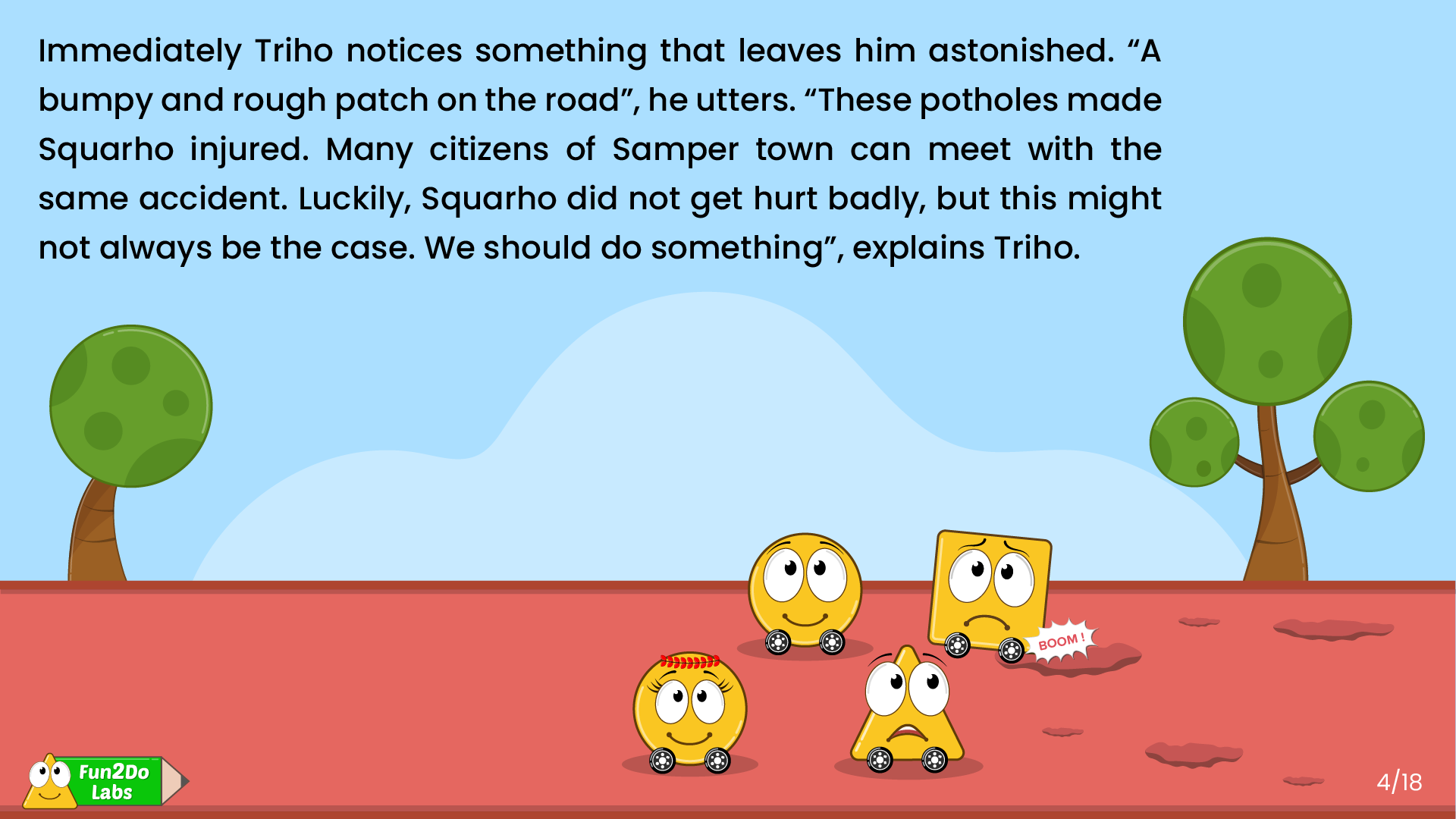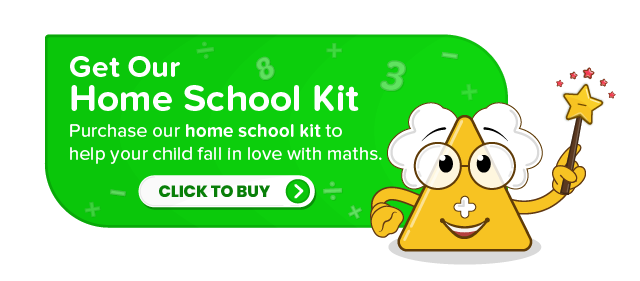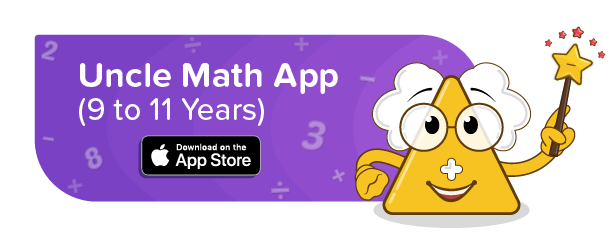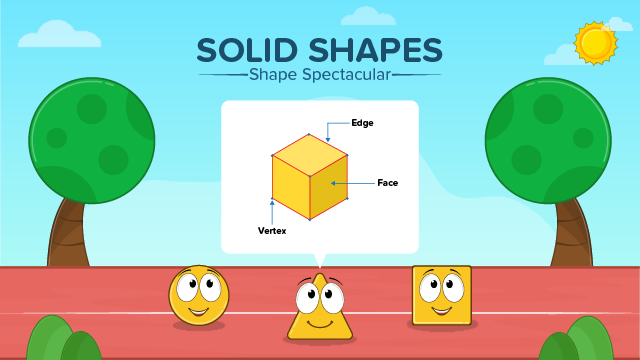
Math Story : Cylinder And Its Basic Properties
The Mystery Of Bumpy Road
The kids are on their wheels. “Swoosh! Zap! Zing!” they move around swiftly. Everybody is happy. It looks like they are having so much fun.
“Ouch!” screams Squarho. The kids rush to help Squarho.
Immediately Triho notices something that leaves him astonished. “A bumpy and rough patch on the road”, he utters. “These potholes made Squarho injured. Many citizens of Samper town can meet with the same accident. Luckily, Squarho did not get hurt badly, but this might not always be the case. We should do something”, explains Triho.

Cirha, Squarho, and Cirho understand the seriousness of the situation. All four of them are thinking of various solutions to tackle this issue. “Let us flatten this road and make it even”, says Cirha. Agreeing with her, Cirho questions, “But how?”
Swiftly, Squarho spots a cube nearby. “Idea! We can use this cube to flatten the road. What do you say?” Everybody agrees.
“Ahhh! Ugghhh!” Squarho drags the cube and places it on the bumpy patch. Everybody tries to press the cube so that the bumps of the road get flat. They also add some sand to the potholes. Then they try to move the cube here and there and repeat the process. But, it does not work. The road is still bumpy and rough.
The kids are disappointed but do not want to give up. Meanwhile, Uncle Math spots them all sweaty and tired near the road.

“What are you all doing here? What is this cube doing on the road?” questions Uncle Math. The kids are happy to see Uncle Math. They narrate everything to him. “I am amazed to see that you care so much for Samper town and its people. Do not worry. We will fix this quickly. Let us go!” he says.
Uncle Math quickly goes and gets a roller from a nearby place. With the help of kids, he rolls it and gets it closer to the bumpy patch.
“Children! Now all of us will roll this roller over the bumps and make them even. Remember, we should put in all our strength and push it”, he guides. The kids follow him. They roll the log in various directions and cover the entire bumpy patch.
“Hurray!” The kids scream out of joy. The bumpy patch is no bumpier now. It is all flat. “When we tried the same thing using the cube, it did not work. But with the roller, it worked. Why so Uncle Math?” questions Cirho. Uncle Math smiles and says, “Because the roller is cylinder shaped”.

Cylinder? What is that? The kids are wondering. “As you can see, a cylinder shape has two circular faces on the top and bottom. It also has one rectangular face that is curved. Interestingly, it does not have any sides or corners”, explains Uncle Math.
“Because the cylinder has a curved face, it can easily roll. Am I right Uncle Math?” asks Triho. Uncle Math agrees and says “Because of its curved face, we did not find it that difficult to roll the log back and forth. Whereas with the cube, it was tough!”.
The kids are delighted. They not only saved Samper town but also learnt a new shape today. Together, they leave on their wheels. It was a purposeful day indeed.

“Thanks, a lot Uncle Math. The large cube bed would have made people’s life really hard. Now I clearly understand that however unique the product is, if it is hard to use, it is not the best product”, says Squarho. Cirho agrees with him. Uncle Math is happy to teach them a useful lesson. It was a purposeful day indeed.
We Learnt That…
- A cylinder shape has two circular faces on the top and bottom. It has one rectangular face that is curved.
- Cylinder does not have any sides or corners.
- Instead of spending time on blaming others for the wrong, we should take action to solve the problem.
- Remember, change begins with you.
Let’s Discuss!
- Why did Squarho fall?
- The bumpy road could not get flattened with the cube, why?
- How did Uncle Math help us in solving the road problem?
- We could have easily blamed other people for the bad road and moved on. But we decided to solve the problems ourselves. Were we right? Why or why not?





